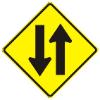Driver's License Exam Quiz: Road Rules And Signs
- DMV
2.
You may optionally provide this to label your report, leaderboard, or certificate.
×
Thank you for your feedback!
















